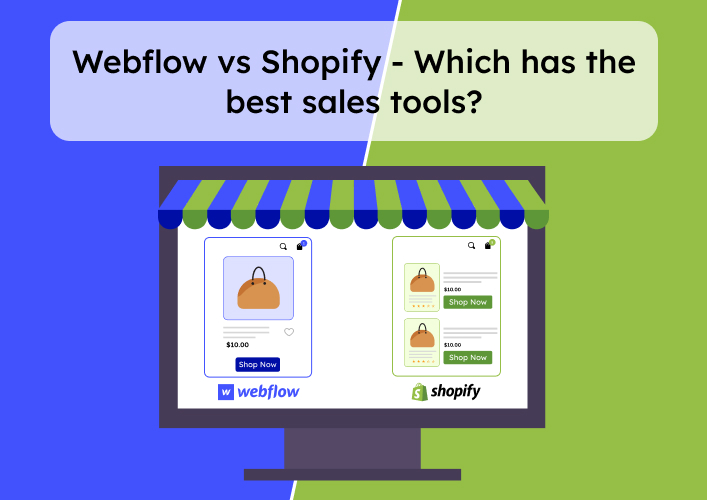Webflow vs Shopify – Which one is easy?
Lastly, when compared to Webflow, Shopify is a breeze to work with. With its intuitive editor and convenient onboarding procedure, it’s a breeze to create a professional-looking online store. Webflow, on the other hand, has a more complex interface that might be confusing to new users.
Webflow vs Shopify – Which has the best sales tools?

Shopify’s abandoned cart recovery feature is available in all paid subscription tiers. Webflow, however, does not provide this functionality. Abandoned cart recovery requires a third-party integration, which often comes with its own fees on top of your regular bills. Thus, Shopify is a comprehensive e-commerce platform that will support any kind or size of online shop. Webflow’s e-commerce features are decent, but the fact that it’s a larger website-building platform makes it unable to compete with just e-commerce-focused platforms.
Webflow vs Shopify – Which one has more payment options?
Lastly, Shopify is functional with more than a hundred others. And if you want to handle payments using Shopify Payments, you won’t have to worry about any hidden costs. But, unless you upgrade to their Plus or Advanced plan, Webflow will charge you a transaction fee and only support a limited number of payment processors.
Webflow vs Shopify – Which one has marketing & analytics features?
Shopify not only has got you covered with the fundamentals but also guides you through SEO best practices as you add products to your store. The only thing it’s lacking is keyword support. While both platforms are competitive when it comes to search engine optimization and marketing tools, Shopify comes out ahead due to its superior built-in analytics. It provides a more all-encompassing picture of your site’s performance without the need for plug-ins from other sources. On the other hand, you can integrate Google Analytics into Webflow sites if you want to analyze your traffic.
Webflow vs Shopify – Which one provides the best customer support?
When compared to other options, Webflow doesn’t seem all that amazing. There is email assistance available, but it may take up to two days to get a reply. A phone number is available in case of emergency, however locating it may be challenging. However, it’s important to give a shout-out to Webflow’s resource hub, Webflow University. There is a wealth of resources available to assist newcomers learn how to use the Webflow editor effectively.
Conclusion
In the battle of Webflow vs Shopify, both platforms offer powerful tools for creating and managing e-commerce websites, but they cater to different needs and preferences. Shopify is a well-established and dedicated e-commerce platform, that provides a comprehensive set of features tailored specifically for online stores. Its user-friendly interface, extensive app ecosystem, and robust payment and shipping options make it an ideal choice for businesses looking for a hassle-free way to set up and manage an online store.
On the other hand, Webflow stands out with its design-centric approach and flexibility. It empowers designers and developers to create visually stunning and unique e-commerce websites using its intuitive visual builder and powerful customization options. While it might require a steeper learning curve, Webflow offers more design freedom and control over the look and feel of your store.
In summary, choose Shopify if you prioritize ease of use, a wide range of e-commerce features, and a thriving app ecosystem. Opt for Webflow if you value design flexibility, and creative control, and have the resources to invest in learning and customizing the platform to your specific needs.
FAQs
Is Shopify only for e-commerce?
Can Webflow handle large-scale e-commerce websites?
Which platform offers better design customization?
Are there transaction fees on both platforms?
Can I migrate my store from one platform to the other?
Ravi Bhojani is the Chief Marketing Officer (CMO) at Alian Software, where he spearheads the company’s marketing strategies and drives its brand presence in the competitive IT services landscape. With over a decade of experience in the technology and marketing sectors, Ravi has consistently demonstrated his ability to blend innovative marketing techniques with deep industry knowledge to deliver outstanding results.